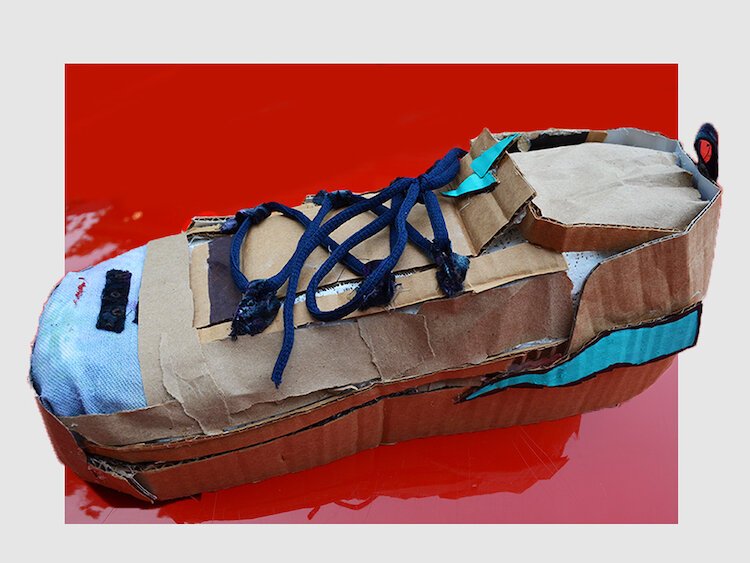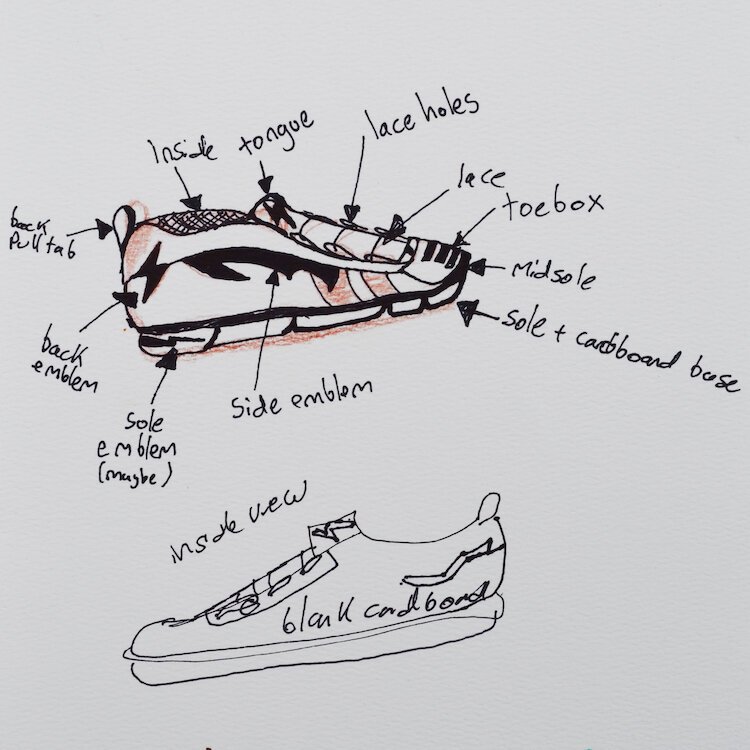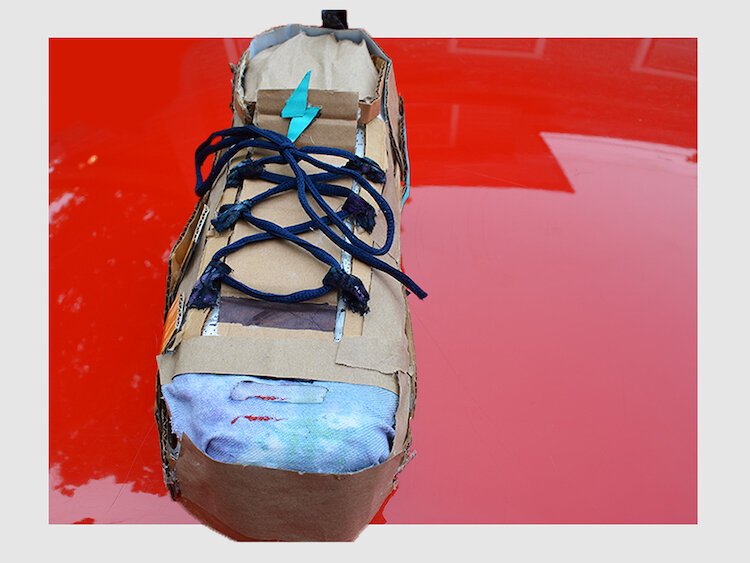Fashion
Voices of Youth: The price of fast fashion — Is it worth it?

On a recent afternoon at The Crossroads mall in Portage, Michigan, people shift in and out of stores. Each retailer has its own version of generic pop music and its own version of trendy clothing.
Bright T-shirts with graphic prints, sparkly dresses, shiny jewelry, and skimpy cut-out tops beckon customers to one popular chain.
]
The lure of fast fashion, inexpensive, fad-driven, mass-produced outfits, is everywhere at the hundreds of malls across the United States, at a time when Americans are increasingly buying ever more clothing.
“We purchase over 80 billion pieces of new clothing every year — that’s 400% more than the amount we bought two decades ago,” according to “The True Cost,” a 2015 documentary about the garment industry.
 Mahdi HassnawiArtist/Designer: Mahdi Hassnawi. Please see Artist’s Statement below.But while big fashion retailers may be appealing with their sleek displays and eye-catching clothing, some industry watchers are raising concerns about factory conditions, pollution, and textile waste and its disposal.
Mahdi HassnawiArtist/Designer: Mahdi Hassnawi. Please see Artist’s Statement below.But while big fashion retailers may be appealing with their sleek displays and eye-catching clothing, some industry watchers are raising concerns about factory conditions, pollution, and textile waste and its disposal.
Consider this: According to the documentary, the average American discards 83 pounds of textiles every year, resulting in more than 11 million tons of textiles being thrown away in the United States alone. The film looks into the apparel industry’s working conditions and environmental impacts.
The filmmakers say the textile waste is largely non-biodegradable, so it’ll sit in landfills for 200 years or more while releasing harmful gases into the air.
What one retailer does
A few retailers are making efforts to improve their sustainability practices.
One of them is H&M. According to Kimberley Delloy, a manager at the store at The Crossroads mall, her location can sell about 400 pieces of clothing a day. She says the company is trying to reduce the environmental impact of its business practices.

 Mahdi HassnawiArtist/Designer: Mahdi Hassnawi. Please see Artist’s Statement below.“We charge for bags now, so our bags are 10 cents, and that all goes to an environmental study that we give money to,” Delloy says.
Mahdi HassnawiArtist/Designer: Mahdi Hassnawi. Please see Artist’s Statement below.“We charge for bags now, so our bags are 10 cents, and that all goes to an environmental study that we give money to,” Delloy says.
H&M introduced this policy into many of its stores around the world. In Singapore, for example, the company donates all of the money from the 10-cent bags to WWF Singapore’s Plastic ACTion (PACT) initiative, according to J.O.E. Eco Alliance.
The company has also started a recycling program that allows anyone to turn in old clothes to earn an incentive to get something new.
“You can even drop your clothes off that you don’t want anymore, and we send them that stuff, too, and then you’ll also get a 15% off coupon for doing that — pretty nice actually,” says Hallie Green, a retail worker at The Crossroads’ H&M.
The company says the donated clothing is either resold as secondhand garments, turned into other products, or shredded into textile fibers to make insulation materials.
The problem is, that transforming textiles is not that simple, so unwanted clothing from well-meaning fashion retailers can and do end up in landfills anyway or incinerated, according to Fashion United, a publication covering the fashion industry worldwide.
Textiles are hard to recycle into new textiles because they are made of a mixture of materials, mostly often cotton and polyester, the news outlet reported on June 28, 2023. The article says it will take time to develop the right technology to change this.
Fashion United says another complication to textile recycling efforts is too often donated garments are of poor quality, reducing their chances of being resold.
A local response
This might seem discouraging, but local businesses offer alternatives to fast fashion.
Jessy Gregg is the owner of Seams Sewing and Mercantile, a small sewing-related business with locations in Kalamazoo and East Lansing. Seams has committed to sustainability, only carrying natural fibers and offering affordable sewing classes to encourage the community to make their own clothes.
“I have sewn pretty much all my life and I have a background in costume design,” Gregg says. “But when my kids were little, I didn’t have an option to do a lot of that. When they got to be a little bit older, I started looking for fabrics that I wanted to sew on and I found that there just wasn’t anything available locally to me other than the big-box stores like Joann, which had a lot of polyester and a lot of polar fleece and things like that.”

 Mahdi HassnawiArtist/Designer: Mahdi Hassnawi. Please see Artist’s Statement below.Gregg did not wish to sew with those materials. “I sew primarily with natural fibers, so decided to start a store so that other people who had a similar frustration could find stuff to sew with,” she says, adding that textile integrity is a major focus for Seams.
Mahdi HassnawiArtist/Designer: Mahdi Hassnawi. Please see Artist’s Statement below.Gregg did not wish to sew with those materials. “I sew primarily with natural fibers, so decided to start a store so that other people who had a similar frustration could find stuff to sew with,” she says, adding that textile integrity is a major focus for Seams.
“I think the metaphor that sticks with me is like if you buried it in the woods, would it be there when you came back 20 years later?” Gregg says. “I want my clothing to add to the planet and not take away from the planet, and so I try as much as possible to only sew with things that will biodegrade so that they are not going to follow future generations.”
The process of creating synthetic fabrics like polyester, rayon, and nylon can be incredibly harmful to the environment. According to Humble & Unique, “the production of synthetic fibers requires a substantial amount of energy, mostly derived from fossil fuels. This not only contributes to the emission of greenhouse gasses but also exacerbates climate change.”
And while synthetic fabrics do have their purposes, most fast fashion companies frequently use them, to keep the price of the garment low. Although natural fabrics aren’t perfect either, they do have the benefit of being biodegradable, preventing textile waste from piling up in landfills.
“Every bolt of fabric in this store has probably had a journey, but I do try to source as close to home as possible,” Gregg says. “Once you take oil out of the fabric production, it’s an agricultural product, so it’s somewhat dependent on drought and water and other things that are happening in other countries, so we’ve definitely noticed an uptick in supply prices after the pandemic, which was due partially to a drought but also just because the pandemic disrupted things so much that some things didn’t get planted (that year).”
Educating on sustainable fabrics
Along with textile integrity, Seams also has a commitment to community education, whether that be teaching people to sew or about sustainability.
“We do a lot of community education,” Gregg says. “So, every year we participate with ScrapFest, which is a scrap metal festival in Lansing, and we started hosting a ‘re-fashion show’ with them.”
She says the event is open to all to participate, but the garment must be made primarily out of upcycled or recycled materials.
“That has been pretty cool because a lot of people have never really looked at their textiles that way,” Gregg says. “We usually get some really great feedback from the audience that didn’t know that that kind of fashion existed.”
By educating people about sewing and sustainability and selling more sustainable fabrics, Gregg says she is offering a great way to combat the negative effects of fast fashion. By people making their own clothing, they feel more connected to the clothes and less likely to throw them out every season.

 Mahdi HassnawiArtist/Designer: Mahdi Hassnawi. Please see Artist’s Statement below.“It’s bringing our clothing back to something that we can relate to, that is responsible, that we put a little bit more work into, that we repair whenever it gets worn out – which you’re more likely to do if you’ve sewn it yourself than if you bought it off-the-rack for five dollars,” Gregg says.
Mahdi HassnawiArtist/Designer: Mahdi Hassnawi. Please see Artist’s Statement below.“It’s bringing our clothing back to something that we can relate to, that is responsible, that we put a little bit more work into, that we repair whenever it gets worn out – which you’re more likely to do if you’ve sewn it yourself than if you bought it off-the-rack for five dollars,” Gregg says.
Rosie Hill will be a junior at Loy Norrix High School in Kalamazoo, Michigan this fall.
Mahdi Hassnawi is a 16-year-old junior at Loy Norrix High School in Kalamazoo, Michigan. Mahdi likes to play basketball and lacrosse and hang out with friends. He found out about Voices of Youth almost three years ago and came back for a second year after his first cohort in 2022. This time around Mahdi is taking on the complicated issue of Fast Fashion.
Artist Statement: Mahdi Hassnawi
“I am working on concept shoes for Voices of Youth, representing the topic of The Impacts of Fast Fashion. I wanted to represent packaging materials that are often not recycled by using these same materials to create my sneakers. I used hot glue and plaster paper to create the shoe, and some colored packing materials and acrylic paint for accents.”


)






